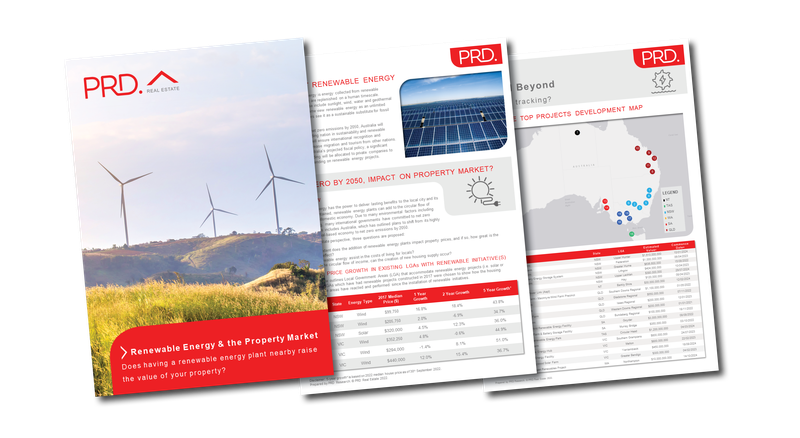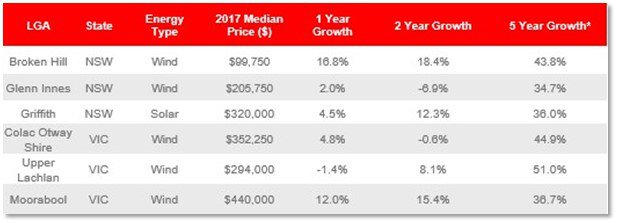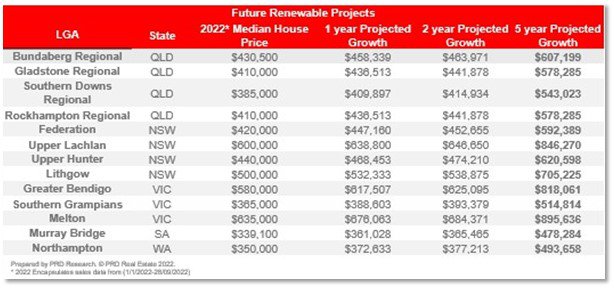Renewable Energy and the Property Market Report
Australia plans to become a net zero emissions country by 2050. If achieved, we will become a leading nation in sustainability and renewable energy. To what extent does the addition of renewable energy plants impact property prices?
Does having a renewable energy plant nearby raise the value of your property?
Renewable energy has the power to deliver lasting benefits to the local city and its people. These power plants, if maintained, can add to the circular flow of income in the domestic economy. Due to many environmental factors including global warming, many international governments have committed to net zero emissions. This includes Australia, which has outlined plans to shift from a highly dependent, coal-based economy to net zero emissions by 2050.

From a real estate perspective, three questions are proposed:
- To what extent does the addition of renewable energy plants impact property prices, and how great is the multiplier effect?
- Does the development of renewable energy help to lower locals' costs of living?
- Can the construction of new housing stock be accomplished through the circular flow of income?
The table below outlines Local Government Areas (LGA) that accommodate renewable energy projects (i.e., a solar or wind farm).

While residing within 100m of a renewable energy plant may not be ideal, the surrounding LGA strongly benefits through the drop in energy prices. While the fiscal growth solely from proximal plants is small (3% across the properties lifespan), it can significantly raise a region’s property value. Property values rise due to the increased demand created in the area. The value of a home may also increase with the installation of solar panels.
International Case Studies
Positive effects on multiplier variables and aspects can be seen as the use of renewable energy rises across many nations, sometimes even surpassing the use of coal and gas. The report looks at three case studies from different parts of the world: California, Philippines and Germany. Each case study is unique in terms of renewable energy initiative, local economic and demographic makeup, and future strategy. However, all three case studies quoted positive outcomes such as: reduced electricity costs, re-direction of state and national budgets to other aspects of the economy (e.g., housing and health), availability of better-quality electricity, and a more vibrant local economy due to interstate and/or international migration to the area. This flows to the housing sector as the areas become more liveable, perpetuating forecasted higher house prices.
Moving forward - How will future renewable projects affect property prices?
To what extent does the addition of renewable energy plants impact property prices, and how great is the multiplier effect? Does the development of renewable energy help to lower locals' costs of living?
To answer these questions, a forecasted growth framework has been created to streamline the growth of a property that is close to a renewable project. As renewable energy is an unlimited resource, it can unfold in its multiplier effect for an extended period. For the purposes of the report, this will be referred to as a multiplier of up to five years. Since using exact prices of properties close to a renewable energy initiative can be skewed due to the property type and time of build, this report considers property prices at an LGA level only.
The introduction of renewable energy can significantly help a region draw in new residents. This is largely because rising inflation and economic growth have increased living expenses, making any decrease in expenses—especially power—a significant deciding factor when choosing where to buy real estate. This has the result of raising the demand for real estate, which raises the price of real estate. The average price growth over the past one, two, and five years has been 6.5%, 7.8%, and 41.0%, according to data on previous renewable energy projects. These were added to the 2022 median house price in areas where a new renewable energy initiative is planned, shown in the table below.
Through the circular flow of income, can the creation of new housing supply occur?
The circular flow model illustrates how money circulates in an endless cycle from producers to households and back again. Money in the housing market moves from buyers to sellers, who then make investments in other sectors. Recent sellers frequently use the proceeds from the sale of their house to fund the construction of new homes in more affordable neighbourhoods (to take advantage of their capital gains). By bringing one more home to a market that is already undersupplied, this in turn contributes to the current housing supply. Additionally, this investment in home construction helps to create jobs, which further adds to the circular flow of income.
Analysis of LGAs with renewable energy initiatives revealed that there was little planned for residential development. For instance, only 59 and 1 new residential developments, respectively, have been approved in Moyne and Cabonne LGAs since 2017. Through the circular flow of income, a more vibrant economy and greater housing demand should lead to the production of housing supply, whether it be through greenfield or other initiatives. This, however, also depends on the adaptability of the regional planning authorities, both at the State and Local Council levels, to permit the growth of new housing supply at a rate that is consistent with demand.









